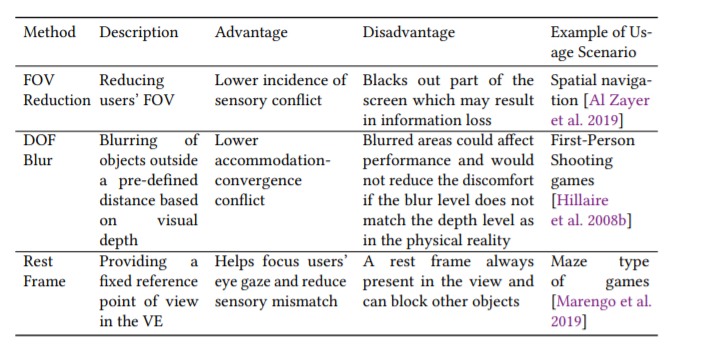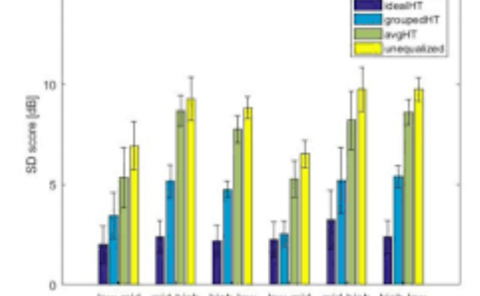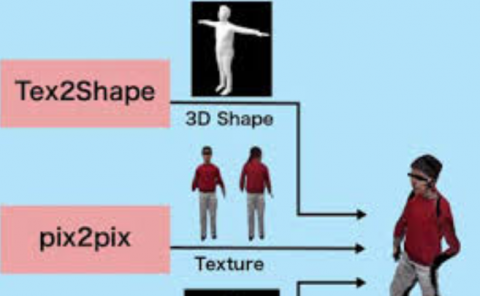Virtual Reality Sickness Mitigation Methods: A Comparative Study in a Racing Game
PubDate: Mar 2021
Teams: Xi’an Jiaotong-Liverpool University;, University of Melbourne
Writers: Rongkai Shi, Hai-Ning Liang, Yu Wu, Difeng Yu, Wenge Xu
PDF: Virtual Reality Sickness Mitigation Methods: A Comparative Study in a Racing Game

Abstract
Using virtual reality (VR) head-mounted displays (HMDs) can induce VR sickness. VR sickness can cause strong discomfort, decrease users’ presence and enjoyment, especially in games, shorten the duration of the VR experience, and can even pose health risks. Previous research has explored different VR sickness mitigation methods by adding visual effects or elements. Field of View (FOV) reduction, Depth of Field (DOF) blurring, and adding a rest frame into the virtual environment are examples of such methods. Although useful in some cases, they might result in information loss. This research is the first to compare VR sickness, presence, workload to complete a search task, and information loss of these three VR sickness mitigation methods in a racing game with two levels of control. To do this, we conducted a mixed factorial user study (N = 32) with degree of control as the between-subjects factor and the VR sickness mitigation techniques as the within-subjects factor. Participants were required to find targets with three difficulty levels while steering or not steering a car in a virtual environment. Our results show that there are no significant differences in VR sickness, presence and workload among these techniques under two levels of control in our VR racing game. We also found that changing FOV dynamically or using DOF blur effects would result in information loss while adding a target reticule as a rest frame would not.



